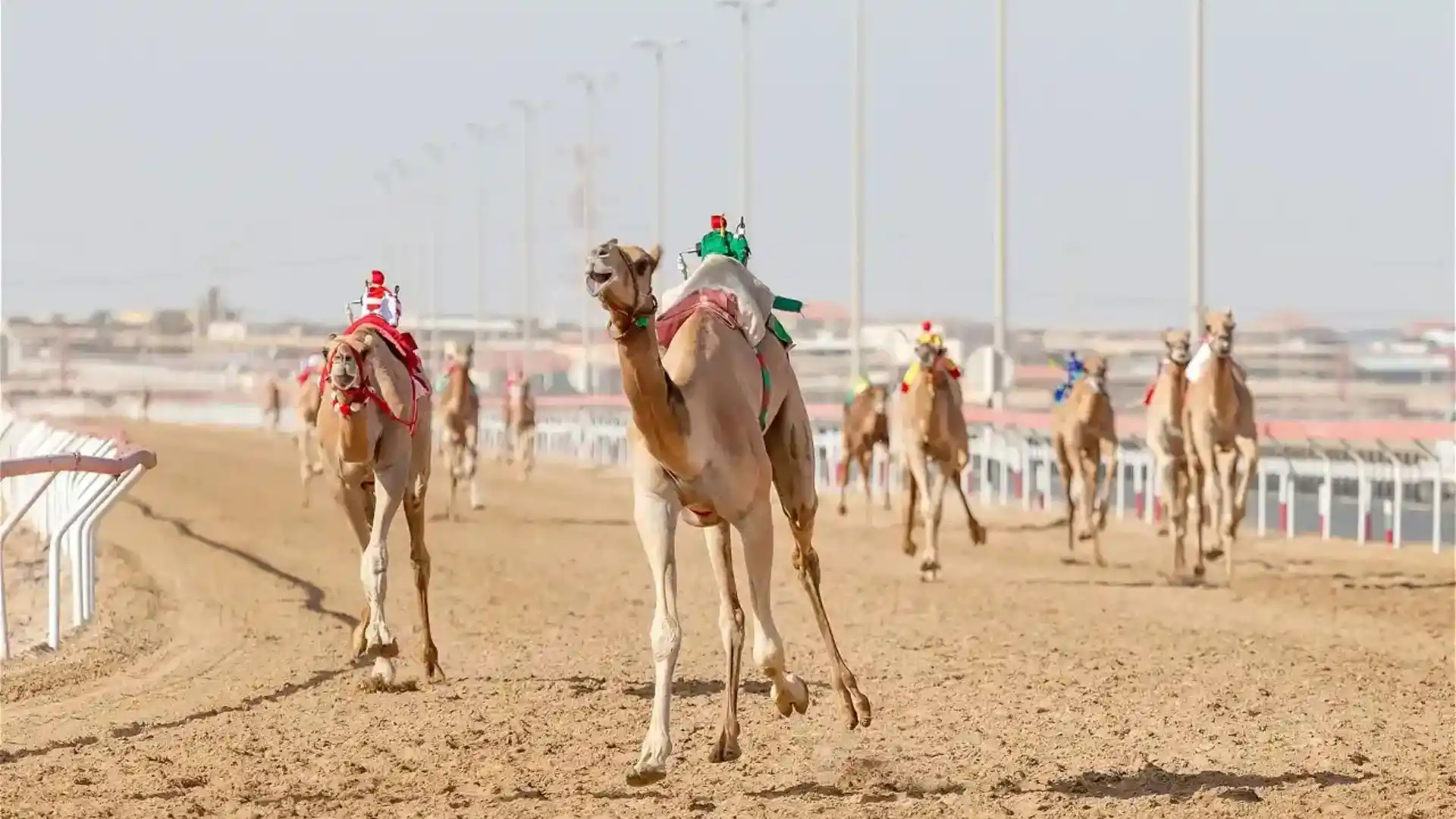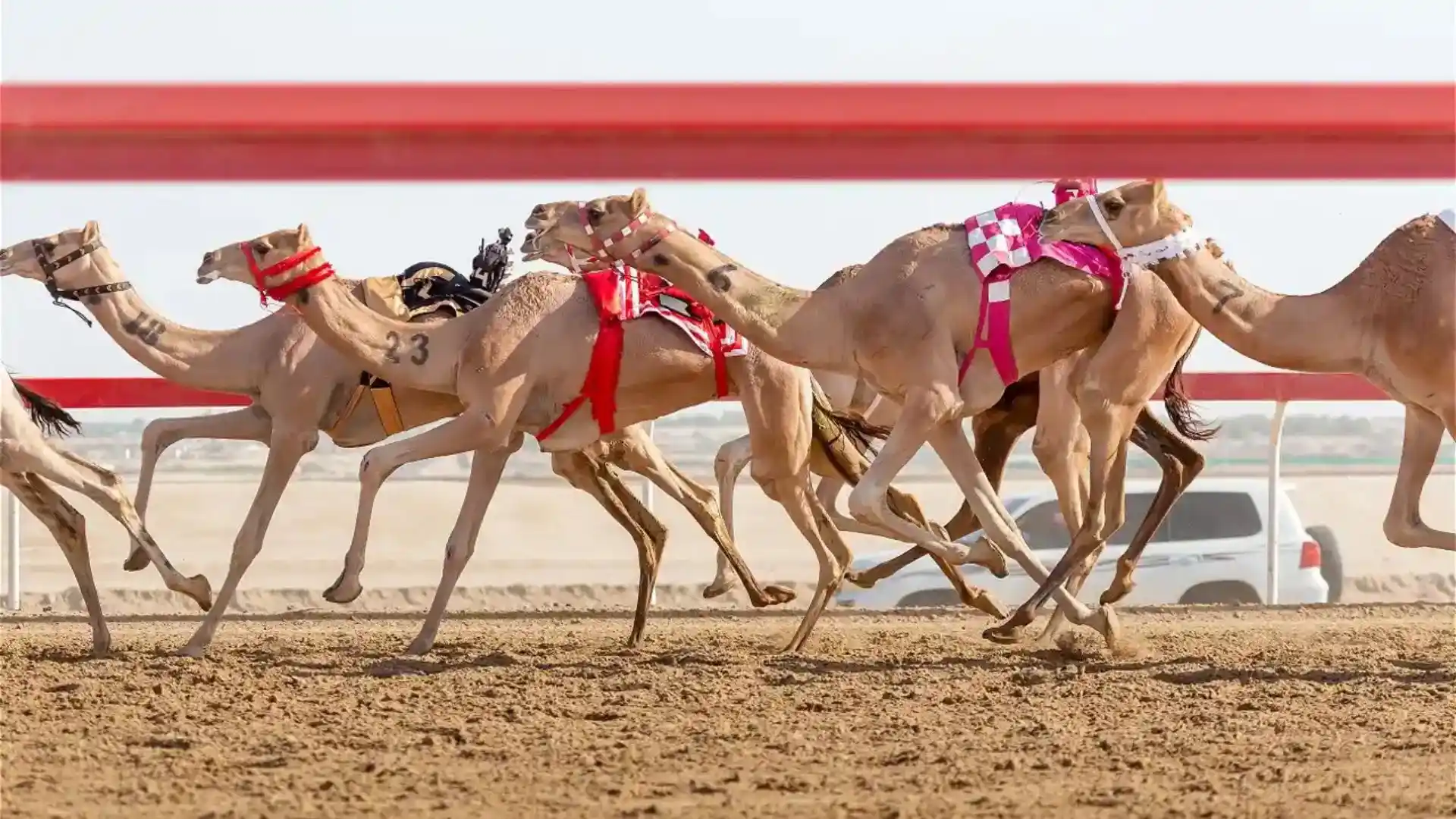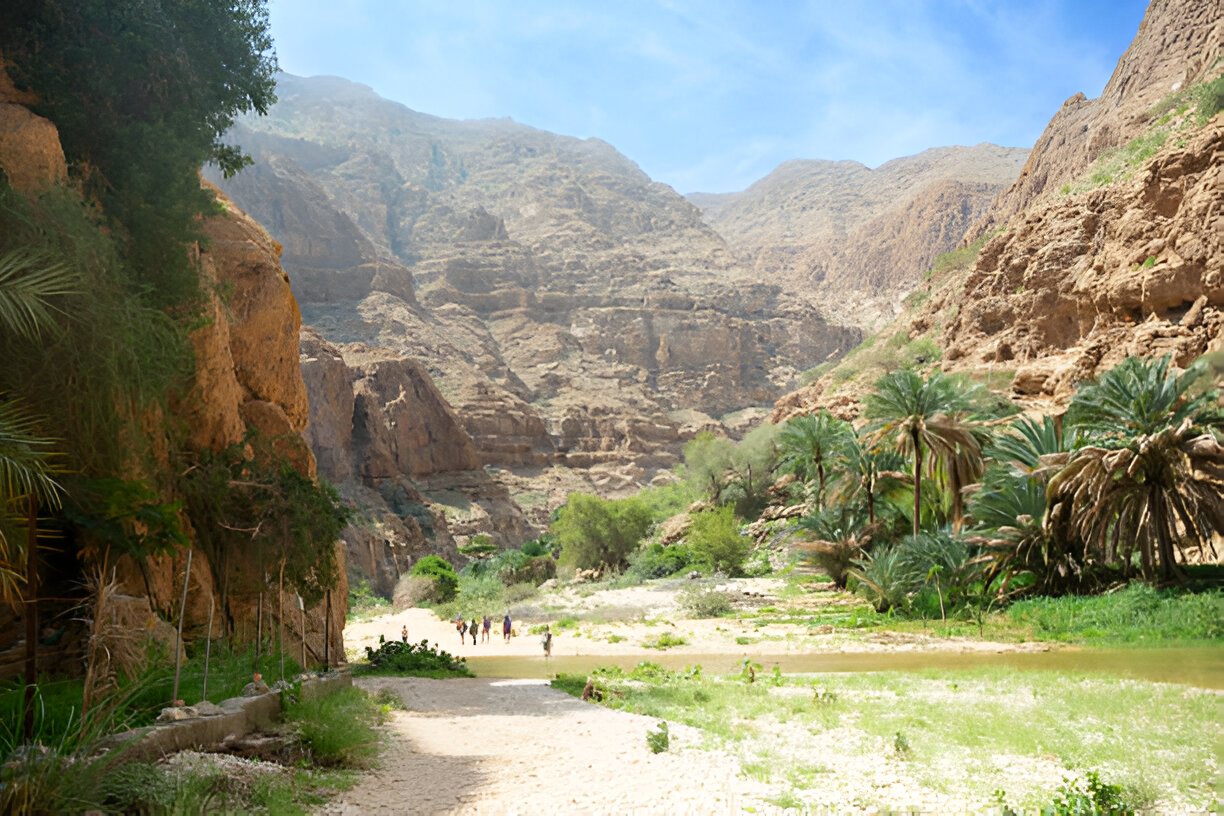

Oman, a land of rich culture and traditions, is home to one of the most exhilarating and cherished events — The Annual Camel Races. This vibrant spectacle draws enthusiasts from across the Gulf region, offering a glimpse into a time-honored tradition that has been passed down through generations. The camel races in Oman are not just about competition; they symbolize the deep-rooted connection between the Omani people and their heritage.
Camel racing in Oman dates back centuries, tracing its origins to the Bedouin tribes who relied on camels for survival in the harsh desert environment. These majestic animals, known as the “ships of the desert,” were vital for transportation, trade, and communication. Over time, the Bedouins began organizing races to showcase the strength and endurance of their camels, which eventually evolved into a formalized sport.
The significance of camel racing in Omani culture cannot be overstated. It is more than just a sport; it is a celebration of tradition, a testament to the bond between man and beast.
As Sheikh Ali bin Khalifa Al Khalifa once said, “Camel racing is not just about winning; it is about preserving our heritage and passing it on to future generations.”
While the roots of camel racing are deeply traditional, the modern-day races in Oman have embraced advancements in technology and organization. Today, camel racing is a well-regulated sport, with dedicated tracks, professional jockeys, and state-of-the-art facilities. The Royal Camel Corps plays a significant role in organizing these events, ensuring that they adhere to strict guidelines and safety standards.
One of the most prominent camel racing events in Oman is the Al Bashayer Festival, held annually in the Sharqiyah Sands. This festival attracts participants from across the Arabian Peninsula, with hundreds of camels competing in various categories. The races are divided into different classes based on the age and breed of the camels, ensuring fair competition and an exciting experience for spectators.
In recent years, technology has revolutionized camel racing in Oman. Traditionally, young boys were employed as jockeys, riding the camels through the challenging desert terrain. However, concerns about child labor and safety led to the introduction of robotic jockeys. These lightweight, remote-controlled devices are now the standard in Omani camel races, providing a safer and more efficient alternative.
The use of technology extends beyond jockeys. GPS tracking systems, biometric monitoring, and performance analysis tools are now commonplace, allowing trainers to optimize their camels’ performance.
As one camel trainer remarked, “Technology has brought a new level of precision to the sport, but it has not diminished the spirit of tradition that defines camel racing.”
Camel racing is more than just a competitive sport; it is a social event that brings communities together. The annual races are a time of celebration, where families gather to watch the races, enjoy traditional music and dance, and partake in the vibrant market atmosphere. The races are often accompanied by cultural exhibitions, showcasing Omani crafts, cuisine, and heritage.
The social impact of camel racing extends beyond the racecourse. The sport provides livelihoods for many Omanis, from breeders and trainers to veterinarians and event organizers. It also fosters a sense of pride and unity, as communities rally behind their local champions. As Sultan Al Habsi, a long-time camel breeder, puts it, “Camel racing is the heartbeat of our community. It brings us together and reminds us of who we are.”
The preparation for camel racing is a rigorous and time-consuming process. Training begins months before the racing season, with camels undergoing a strict regimen of exercise, diet, and care. Trainers work closely with veterinarians to ensure that the camels are in peak physical condition, focusing on endurance, speed, and overall health.
Diet plays a crucial role in a camel’s performance. A balanced diet of dates, oats, and milk is supplemented with specialized feeds to enhance strength and stamina. Hydration is equally important, particularly in the hot desert climate. Camels are provided with electrolyte-rich water to maintain their energy levels during training and races.
Exercise routines are carefully designed to build endurance and speed. Camels are taken on long runs across the desert, gradually increasing the distance and intensity as the racing season approaches.
As one Omani trainer noted, “Training a camel is like training an athlete. It requires patience, dedication, and a deep understanding of the animal’s needs.”
The annual camel races in Oman are a spectacle unlike any other. The excitement in the air is palpable as the camels line up at the starting gate, their riders ready to guide them across the sandy track. The sound of drums and traditional Omani music fills the air, adding to the festive atmosphere.
As the race begins, the camels burst out of the gate, their powerful legs kicking up clouds of sand as they race towards the finish line. The crowd cheers loudly, urging their favorite camels on. The tension builds as the camels approach the final stretch, with the outcome often decided by mere seconds.
The winners of the races are celebrated with great fanfare, receiving trophies, cash prizes, and the admiration of the community. The winning camels themselves become celebrities, their names etched into the annals of Omani racing history.
As one spectator observed, “There is nothing quite like the thrill of a camel race. It is a moment of pure exhilaration, a celebration of our culture and heritage.”

In recent years, Omani camel racing has gained international recognition, attracting tourists and enthusiasts from around the world. The races offer a unique insight into Omani culture, providing visitors with an authentic experience of the country’s traditions and way of life.
Tourism has become an integral part of the camel racing scene, with travel agencies offering specialized tours that include visits to the races, camel farms, and cultural sites. The Omani government has also recognized the potential of camel racing as a tourist attraction, investing in infrastructure and promoting the sport on a global scale.
As a result, the annual camel races have become a significant draw for international visitors, contributing to the growth of Oman’s tourism industry.
One tourist from Europe commented, “Watching the camel races in Oman was a once-in-a-lifetime experience. It gave me a deep appreciation for the country’s rich heritage and the incredible bond between the Omani people and their camels.”
Traditionally, camel racing has been a male-dominated sport, with men serving as breeders, trainers, and jockeys. However, in recent years, women have begun to play a more prominent role in the sport, challenging stereotypes and breaking down barriers.
Women in Oman are increasingly involved in the breeding and training of racing camels, bringing a fresh perspective and new ideas to the sport. Some women have even taken on the role of jockeys, riding the camels in races and competing alongside their male counterparts.
This shift reflects broader changes in Omani society, where women are taking on more active roles in various fields, including sports.
As one female camel trainer remarked, “Camel racing is not just for men. Women have a lot to contribute to the sport, and we are proving that we can compete at the highest level.”
The future of camel racing in Oman looks bright, with the sport continuing to evolve while staying true to its roots. The Omani government is committed to preserving this cultural tradition, investing in infrastructure, and promoting the sport both locally and internationally.
One of the key challenges facing the sport is ensuring that it remains accessible to future generations. As younger Omanis become more urbanized, there is a risk that the connection to camel racing may weaken. To address this, efforts are being made to engage young people in the sport, through educational programs, youth competitions, and community initiatives.
The use of technology will also continue to play a significant role in the future of camel racing. Innovations such as advanced training techniques, biometric analysis, and data-driven breeding programs are expected to further enhance the performance of racing camels, ensuring that the sport remains competitive and exciting.
As one Omani official noted, “The future of camel racing in Oman is about balancing tradition with innovation. We want to preserve our heritage while embracing the advancements that will keep the sport alive for generations to come.”
Camel racing, like any other sport, has its environmental and ethical considerations. The welfare of the camels is paramount, with strict regulations in place to ensure their health and safety. Camel owners and trainers are required to adhere to guidelines on diet, exercise, and veterinary care, ensuring that the animals are treated with respect and dignity.
Environmental sustainability is also a concern, particularly in the context of desert ecosystems. The Omani government is working to minimize the environmental impact of camel racing, through measures such as sustainable water use, habitat conservation, and waste management.
As one environmentalist commented, “Camel racing is a cherished tradition, but it must be conducted in a way that respects both the animals and the environment. By adopting sustainable practices, we can ensure that this sport continues to thrive without harming our natural heritage.”
Camel racing is deeply intertwined with Omani identity, serving as a symbol of the country’s history, culture, and values. The sport embodies the resilience and resourcefulness of the Omani people, qualities that have been shaped by centuries of life in the desert.
For many Omanis, camel racing is a source of pride and a reminder of their connection to the land and its traditions. It is an expression of the country’s unique heritage, one that distinguishes Oman from its neighbors and showcases its rich cultural diversity.
As Sultan Qaboos bin Said once said, “Our traditions are the foundation of our nation. They are the threads that bind us together, connecting us to our past and guiding us into the future.” This sentiment is at the heart of Omani camel racing, a tradition that continues to inspire and unite the people of Oman.
Quotes from participants and spectators add a personal dimension to the story of Omani camel racing, providing insight into the passion and dedication that drive the sport.
One young jockey shared his experience, saying, “Riding a racing camel is an incredible feeling. It’s a rush of adrenaline, but it’s also about trust. You have to trust your camel, and your camel has to trust you.”
A veteran breeder offered his perspective on the sport’s evolution, stating, “Camel racing has changed a lot over the years, but the essence remains the same. It’s about tradition, about honoring our ancestors and passing on their legacy.”
A spectator from a neighboring Gulf country expressed his admiration for the event, saying, “I’ve attended camel races across the region, but there’s something special about the races in Oman. The atmosphere, the tradition—it’s truly unique.”
The Annual Camel Races in Oman are more than just a sporting event; they are a celebration of a rich cultural tradition that has been preserved and cherished for generations. The races offer a unique window into Omani heritage, showcasing the deep bond between the people and their camels. As the sport continues to evolve, it remains a symbol of resilience, unity, and pride for the Omani people.
The future of camel racing in Oman is bright, with a growing global appeal, increased participation from women, and the integration of modern technology. However, it is essential to balance these advancements with a commitment to preserving the cultural and environmental integrity of the sport.
In the words of an Omani elder, “Camel racing is not just about speed; it’s about heritage, community, and the spirit of our nation. As long as we hold on to these values, camel racing will continue to thrive and inspire future generations.”
By embracing both tradition and innovation, Oman ensures that the annual camel races will remain a vibrant and enduring part of its cultural landscape, captivating the hearts and minds of all who experience them.
Never miss any important news. Subscribe to our newsletter.







